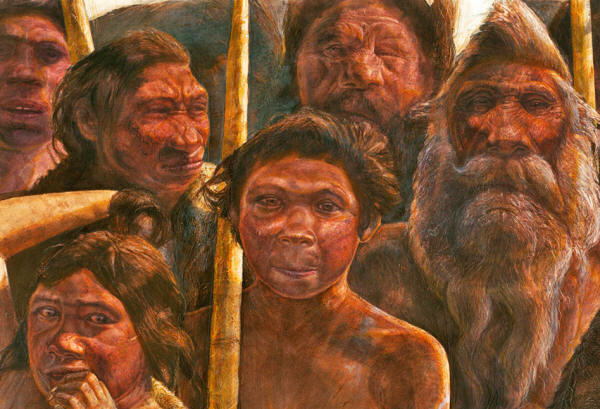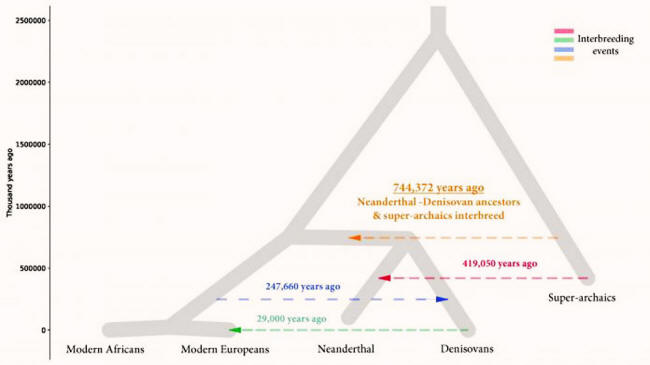|

by News Staff / Source
February 21,
2020
from
Sci-News Website

Early Neanderthals that lived at Sima de los Huesos,
a cave
site in Atapuerca Mountains, Spain.
Image
credit: © Kennis & Kennis / Madrid Scientific Films.
A new study by researchers from the Department of Anthropology at
the University of Utah shows that over 700,000 years ago, the
ancestors of
Neanderthals and Denisovans
interbred with their Eurasian predecessors:
members of a 'superarchaic'
population that separated from other humans about 2 million
years ago...
"We've never
known about this episode of interbreeding and we've never
been able to estimate the size of the superarchaic
population," said University of Utah's Professor Alan
Rogers, the lead author of the study.
"We're just
shedding light on an interval on human evolutionary history
that was previously completely dark."
Professor Alan Rogers
and colleagues studied the ways in which mutations are shared among
modern Africans and Europeans, and ancient Neanderthals and
Denisovans.
The pattern of sharing implied five episodes of interbreeding,
including one that was previously unknown.
The newly discovered episode involves interbreeding over 700,000
years ago between a distantly related 'superarchaic' population
which separated from all other humans around 2 million years ago,
and the ancestors of Neanderthals and Denisovans.
The
superarchaic and Neanderthal-Denisovan
ancestor populations were more distantly related than any other pair
of human populations previously known to interbreed.
For example,
modern humans and
Neanderthals had been separated for about 750,000 years when
they interbred.
The superarchaics and Neanderthal-Denisovan ancestors were
separated for well over a million years.
"These findings
about the timing at which interbreeding happened in the
human lineage is telling something about how long it takes
for reproductive isolation to evolve," Professor Rogers
said.
The researchers used
other clues in the genomes to estimate when the ancient human
populations separated and their effective population size.
They estimated the superarchaics separated into its own species
about 2 million years ago. This agrees with human fossil
evidence in Eurasia that is 1.85 million years old.

An evolutionary tree including four proposed episodes of gene flow;
the previously unknown event 744,372 years ago (orange) suggests
interbreeding occurred between superarchaics
and Neanderthal-Denisovan ancestors in Eurasia.
Image credit: Rogers et al
The scientists also proposed there were three waves of human
migration into Eurasia.
-
The first was 2
million years ago when the superarchaics migrated into
Eurasia and expanded into a large population.
-
Then 700,000
years ago, Neanderthal-Denisovan ancestors migrated into
Eurasia and quickly interbred with the descendants of the
superarchaics.
-
Finally, modern
humans expanded to Eurasia 50,000 years ago where we know
they interbred with other ancient humans, including with the
Neanderthals.
"I've been
working for the last couple of years on this different
way of analyzing genetic data to find out about
history," Professor Rogers said.
"It's just gratifying that you come up with a different
way of looking at the data and you end up discovering
things that people haven't been able to see with other
methods."
The results were
published in the journal Science Advances...
References
| 


